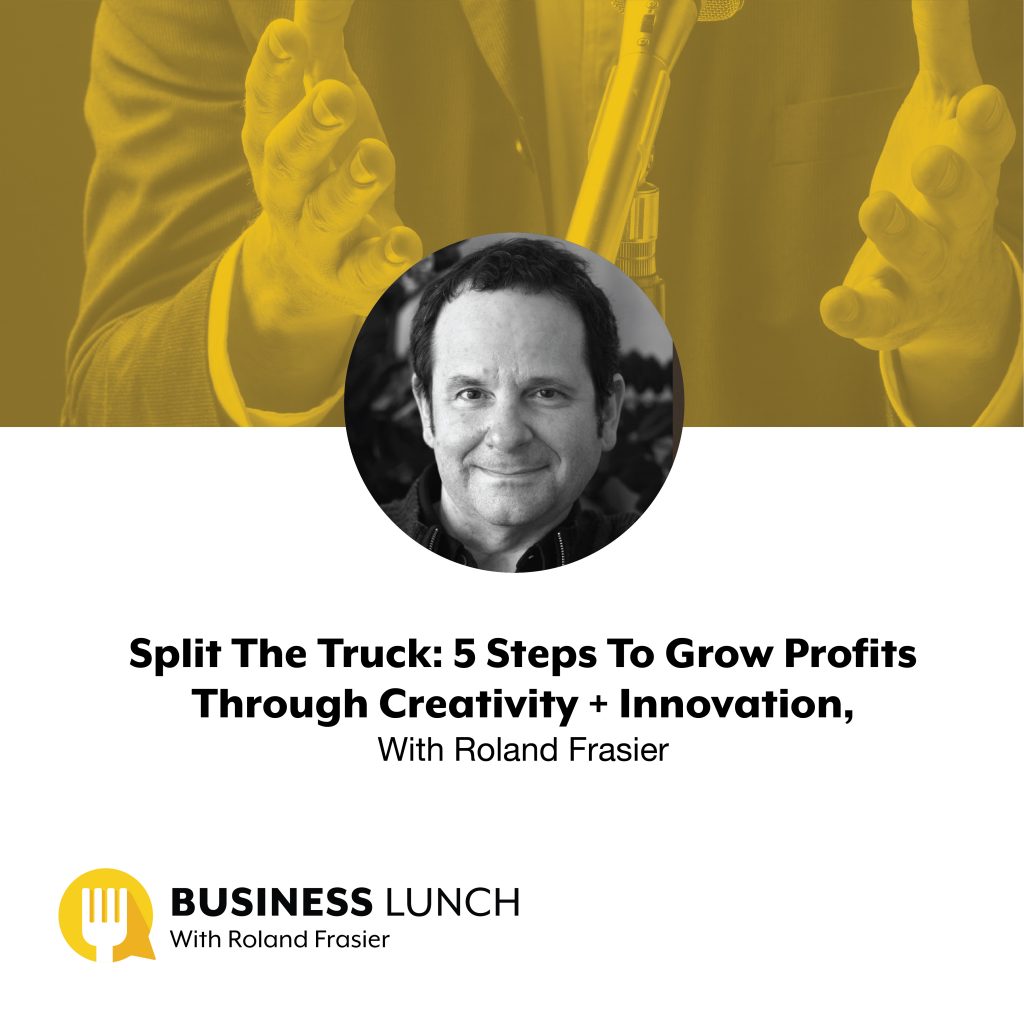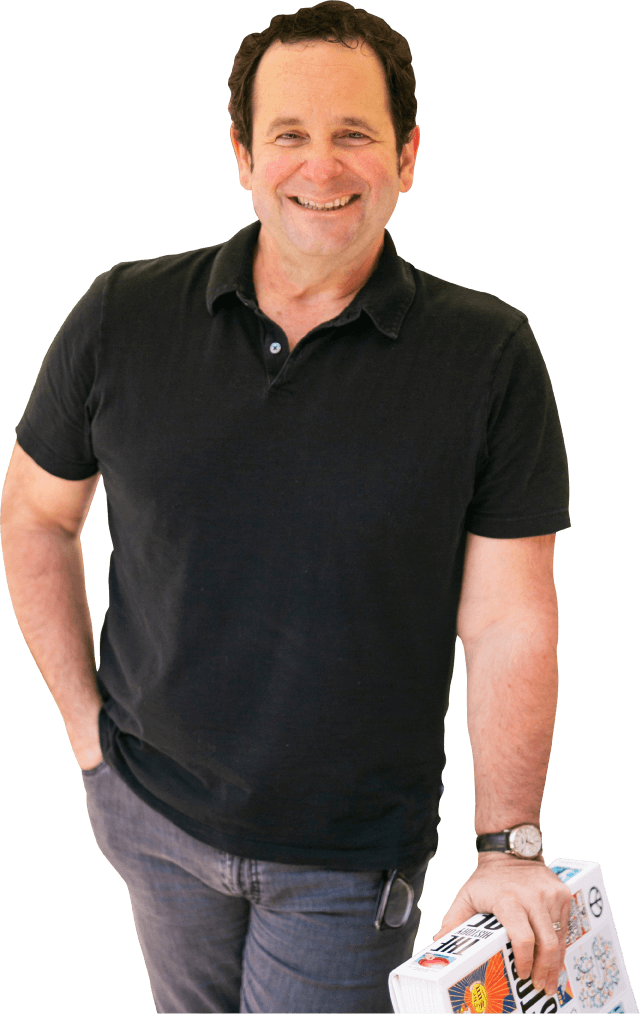Our host, Roland Frasier, has founded, scaled, or sold 24 different 7 to 9 figure businesses, ranging from consumer products to industrial machine manufacturing companies, with adjusted sales ranging from $3 million to $337 million. You don’t manage that kind of success without knowing a thing or two about creativity and innovation. In this episode, Roland draws on his experience and shares his strategies so that you can grow your profits too!
If you enjoy this podcast, would you take a moment to subscribe on ApplePodcasts, write a review, and share this episode with your business-minded friends?
Ask Better Questions
Before we break down Roland’s 5 Steps, he swears that asking better questions IS THE KEY to innovative thinking. If you want to create growth strategies that will propel your business forward, faster than the average, this is critical. If you are always asking questions like, “How can I cut costs by 1/3?” or “How can I hit my three-year goals in 6 months,” then you will turn on both the conscious and unconscious areas of your brain, and the creativity engine will engage.
“If you do what you’ve always done and copy what other people are doing, there won’t be much opportunity for innovation or exponential improvement.” Roland Frasier
Listen Today For Roland’s 5 Steps To Grow Your Profits
Step #1: Implement a Top-Line Scrape.
Follow the “Profit First” philosophy of demanding that your business produce a profit before anything else. You work hard in your business, and it exists to serve you by providing the standard of living that you desire. Carve out your share first and force the company to perform at a level that provides you with your required profit.
One of the easiest ways to do this that we employ in our businesses is to implement a Top-Line Scrape (“TLS”). The TLS simply takes your monthly Net Sales figure, Gross Sales less returns, discounts, chargebacks, etc. and then multiplies that figure by a fixed percent that you determine as your profit that you want to earn from the business. So, let’s say you have gross monthly sales this month of $210k with refunds and discounts of $10k, and you want the business to earn you a 15% profit. Simply establish a TLS of 15% of Net Sales, and multiply your Net Sales figure of $200k by 15% to determine that your TLS for this month should be $30k.
“This is Step #1 because if you don’t consciously decide and then insist on receiving a specific profit from your business, your business will very frequently find a way to demand every dollar that it produces to operate and grow.” Roland Frasier
The next four steps will provide you with additional strategies, tools, and techniques to drive more profit from your business so that it will be easier for you to follow the TLS model.
Step #2: Turn Expenses Into Profits
When it comes to innovating to increase profitability, “E2P” is one of the most potent strategies. Here’s how it works.
First, take a look at all of your major expenses. Next, rank them from highest to lowest by category. For example, if payroll is your most significant expense, that would be ranked #1, then maybe rent, then cost of goods sold/inventory, etc.
Now that you know what your biggest expenses are, brainstorm ways that you might be able to turn those into a profit center. For one of our businesses, we identified that payroll for our content creation team in the Philippines was one of our largest expenses, costing about $50k per month. As we considered what we could do to turn that into a profit center, we decided that if we started offering content as a service to other businesses, we could actually transform this $600k per year expense into a profit center. At the very least, we could provide content creation to other businesses using our excess capacity to create a breakeven situation.
Listen for some great examples from Roland!
“You are only limited by your own imagination in creating ways to transform expenses into profits.” Roland Frasier
Step #3: Identify and eliminate the inefficiencies in your business.
One of the best ways to do this is using Taiichi Ohno’s seven “Mudas,” or seven’ wastes,’ which are 1) Transportation, 2) Inventory, 3) Motion, 4) Waiting, 5) Overproduction, 6) Over-processing and 7) Defects. They are often referred to by the acronym “TIM WOOD.”
Roland provides three more ‘wastes’ that also need consideration:
1. Waste of talent – not using your people to their full potential. Or not asking them regularly how you can improve processes and eliminate inefficiencies.
2. Waste of Materials: Utilizing off-cuts and by-products as opposed to sending them to the dump. Listen for an awesome example of this that generated $250 million in annual revenue!!
3. Waste of Resources: failing to make efficient use of natural resources like electricity, water, and fuel.
“That first step of examining potential inefficiencies is critical because you can’t fix something if you don’t know that it needs fixing in the first place.” Roland Frasier
Run through the seven wastes and try to identify where the inefficiencies exist in your business.
Step #4: Flag and fix failure points (both existing and potential future failure) in your business.
We all have areas of our business where we know that things are going wrong. Maybe it’s something that customers habitually complain about, places where subscriptions or continuity revenue falls off, or a customer experience that you never got around to improving. Additionally, potential future-failure points may pose a threat to your business.
To identify the existing failure points, examine your KPIs around Average Order Value, Lifetime Customer Value, Customer Churn, Net Promoter Score, Customer Health Score, C-SAT, and Employee Sentiment scores.
To identify the potential failure points, use Inversion Thinking, where you list the things that you DO want to happen in your business, then invert them so that you identify those things that you DO NOT want to happen. Then, find solutions to all the things that you do not want to happen. For more on this, listen to this Episode.
“Tell me where I’m going to die, so I can be sure to never go there.” Charlie Munger
Step #5: Use First Principles Reasoning and Inversion Thinking
Use First Principles Reasoning (“FPR”) to identify, define, question, and validate or innovate on your current assumptions about your business.
In the “split the truck” example (early in the episode), the assumption would be that you need two separate delivery formats to get your products to your customers, tanker trucks and box trucks. Break the problem down into its fundamental principles. This is where you ask questions about the assumptions you made in the first step. In the “split the truck” example, the first question to ask would be, “Is it possible to deliver our products to customers on a single truck?”
Lastly, create new solutions from scratch, just like our “split the truck” innovator did by designing his own half-tanker and half-box truck.
Conclusion
If you want to make more profit from your business, you absolutely can. You simply have to decide what you want it to be and demand that your business produce it.
Follow the 5-step process provided above, and you can make it happen. You will be amazed at how quickly your business begins to perform for you.
Click to find us on Apple Podcasts and other podcast players.
Resources In This Episode
“The Goal” by Eliyahu Goldratt Book.
PROFITS FIRST Book. “Everyone should read it”.
Click here to Listen, Subscribe, and Review Business Lunch on Apple Podcasts
Contact & Follow Roland
On Facebook
On Instagram
Through his Website
Follow Business Lunch Podcast
On Twitter
Thanks so much for joining us this week. Want to subscribe to Business Lunch with Roland Frasier? Have some feedback you’d like to share? Connect with us on ApplePodcasts and leave us an honest review! Your feedback will help us improve the show, and connect us with more high flyers like you.
Click to find us on Apple Podcasts and other podcast players.


